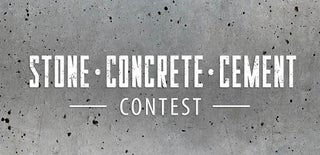Introduction: Urban Model Rotterdam
I have made an urban model that consists entirely of concrete.
the scale of the model is: 1 in 200. (1 cm in the model is 200 cm in reality) the model consists of 2 parts. each part has a size of 80x80.5 cm and is 5 cm thick. and weigh around 75 pounds each (without the buildings). to give you an idea how heavy it really is. the 2 plates show the urban plan of the city. on which later the buildings will be placed that also consist entirely of concrete. Where water is present in the model I have used epoxy casting resin
because it is a very heavy model, I have chosen to place a pallet underneath so that it does not have to bear its own weight.
later I added a custom made metal framework to make it somewhat presentable,and gives it a more tough appearance.
Step 1: Making the Mold
making the mold is important because we are going to use it to cast the 2 plates of concrete.
for making the mold
I have used concreteplex plate (betonplex). i used 12 mm thinkness, but its better to use 18mm because concrete is heavy and it is easier screw.
Step 2: Prepair the Mold
In this step you have to make sure your mold is clean.
make sure the bottom plate is level while making the mold
make sure the edges are airtight and watertight.
You do this by using a kit. Get this along all edges
Step 3: The City Plan
I have requested the drawing digitally from the municipality. In my case the municipality of Rotterdam, the Netherlands.
I have used the Rhinoceros program. I have chosen my location and put it in the correct scale. (1: 200).
finally I printed it out.
Pay attention!!!! you have to mirror print, this is because you are going to pour it. And when done, you have to turn the mold over and you will see that it is correct.
You can also use the drawing to lasercut directly on the material that is best useable for the mald. I used plastic so that the concrete cant get attach to it (also dont forget to mirror)
Step 4: Layout of the City
place the finished and cut piece in the mold or the laser cut work.
In this case, the deepest parts of the model (water) must become high parts in the mold and the roads less high. Look at the different heights in the photo
Materials you can use:
Foam is possible, pmma, PS
Step 5: Pour the Concrete
With the concrete that I used I had just enough of 3 bags of 20 kilos each to fill the mold totaly.
I have used a strong concrete that is used, for example, for casting foundations and piles.
The grain size with me was sometimes 18 mm so I added the fine gray sand to make it a little better.
The search for concrete with a small grain such as 12 and 8 mm is perhaps a better concrete to pour with. Certainly when smaller details are required
Step 6: Fill It
Step 7: Level It
try to get it level and use a plastic sheet to prevent the concrete from drying out during the hardening process
Step 8:
Step 9: Turn
the molded part is now out of the mold. Now the intention is to turn it around. If there is no reinforcement in the concrete piece, it is advisable to place it on a solid wooden plate or a pallet.
don't do this alone !!
Step 10:
Step 11: Water
I have used epoxy resin. It consists of 2 components that you must mix with each other in the right way. The explanation is often completely explained on the package.
See the list of requirements.
Step 12: Making the Buildings
Making the buildings is difficult. it is smaller and can consist of difficult forms. To make the molds, I printed out the floor plans of the buildings and cut the pieces of petonplex to size.
when casting the buildings you have to make sure that you tap the molds enough with a hammer. I used a sander. to apply more vibration so that the concrete sinks better and the cracks close better in the mold
Step 13:
Step 14:
Step 15:
Step 16: End Result
finished

Participated in the
Stone Concrete and Cement Contest







